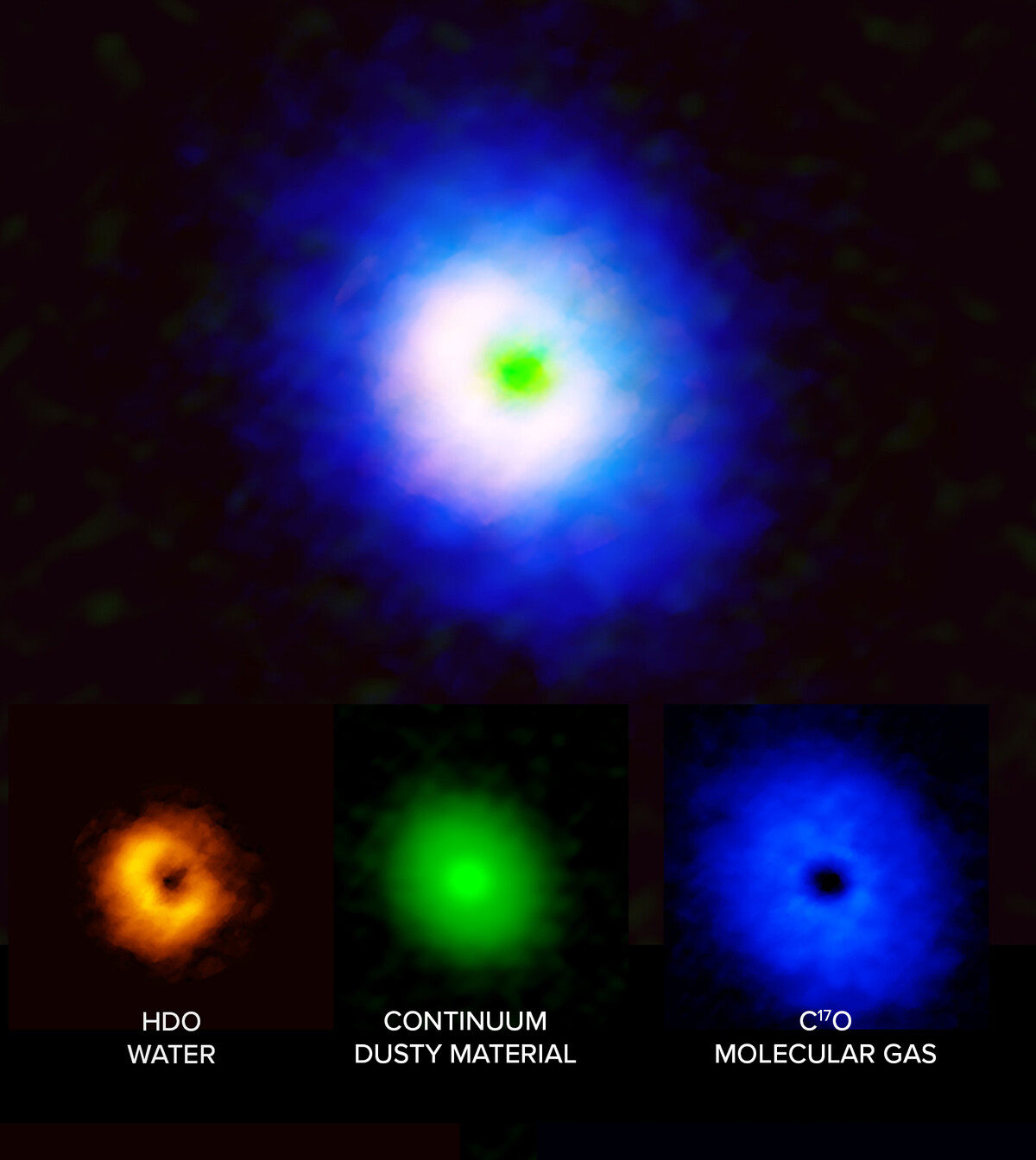'Missing link' protostar may prove solar system's water is older than the sun
"We can now trace the origins of water in our solar system to before the formation of the sun."
Astronomers have detected an abundance of water in the form of gas in a disk of planet-forming material that surrounds a distant star. The disk appears to contain hundreds of times more water than in all of Earth's oceans.
The discovery could give clues as to how water moves from star-forming clouds of gas and dust to planets, and could also indicate that Earth's water may be older than the sun.
The team of astronomers reached their conclusion as a result of observations of V883 Orionis, an infant star or "protostar" located around 1,300 light-years from Earth in the Orion constellation using the Atacama Large Millimeter/submillimeter Array (ALMA) in Northern Chile.
"We can now trace the origins of water in our solar system to before the formation of the sun," National Radio Astronomy Observatory (NRAO) astronomer and research lead author, John J. Tobin, said in a statement. "V883 Orionis is the missing link in this case."
Related: How did Earth get its water? Moon rocks suggest it might have been here all along.

They studied a heavier version of water in the disk of gas and dust around the young star which will one day collapse to create planets, comets, and asteroids. Instead of the usual composition of one oxygen atom and two hydrogen atoms in heavy water, the hydrogen atoms are replaced with deuterium, a hydrogen isotope that contains a proton and neutron in its nucleus rather than just a proton.
Because heavy water forms differently than traditional water, it can be used to trace when and where water is formed. A similar technique has previously been used to determine that the water/heavy water ratio on Earth is the same as that of the wider solar system, implying water may have been delivered to our planet via comets.
Get the Space.com Newsletter
Breaking space news, the latest updates on rocket launches, skywatching events and more!
Thus, the team was able to determine a "path" for water: From massive clouds of gas and dust that collapse to form stars, to the planetary disks that grow around these infant stars and eventually birth planets, asteroids and comets, and finally presumably to those objects themselves.

Water's journey from star-forming clouds to the clouds themselves has been observed in the past, as has the transfer of water from comets to planets, but the link that sees waters move from around stars to comets has been missing until now
"The composition of the water in the disk is very similar to that of comets in our own solar system," Tobin explained. "This is confirmation of the idea that the water in planetary systems formed billions of years ago, before the sun, in interstellar space, and has been inherited by both comets and Earth, relatively unchanged."
One of the reasons that this connection in the journey of water may have been hitherto unobserved is that water exists in the form of ice while found in planet-forming disks of gas around young stars, and is thus hidden from view. This is because water in the form of gas can be spotted via the radiation it emits as its molecules vibrate, but the motion of these molecules is far more subdued when water is frozen solid.
The problem is complicated further by the fact that water in its gas form is more common at the heart of these disks closer to the warmth of the central star, but here its emissions are obscured by the dust in the disk. These regions are also too small to be spotted with current telescopes.
The team was able to side-step these difficulties in this case because the disk of V883 Orionis is usually hot as a result of dramatic outbursts from the central protostar heating it. This brings the temperature up to the point at which water is no longer in the form of ice but is gaseous even in more distant regions and is therefore detectable.

The sensitivity of ALMA, which is comprised of 66 radio telescope antennas spread across the Atacama Desert, not only allowed the team to spot gaseous water around V883 Orionis but also let them determine the composition of the water and its distribution. This showed that the disk contains no less than 1,200 times the water found in all of Earth's oceans combined.
The researchers intend to use the forthcoming Extremely Large Telescope (ELT), under construction at the top of the Cerro Armazones mountain in Chile to further investigate the gaseous water in similar planet-forming disks.
"This will give us a much more complete view of the ice and gas in planet-forming disks," research author and Leiden Observatory Ph.D. student Margor Leemker said.
The team's research is published in Wednesday's (March 8) edition of the journal Nature.
Follow us on Twitter @Spacedotcom or on Facebook.
Join our Space Forums to keep talking space on the latest missions, night sky and more! And if you have a news tip, correction or comment, let us know at: community@space.com.

Robert Lea is a science journalist in the U.K. whose articles have been published in Physics World, New Scientist, Astronomy Magazine, All About Space, Newsweek and ZME Science. He also writes about science communication for Elsevier and the European Journal of Physics. Rob holds a bachelor of science degree in physics and astronomy from the U.K.’s Open University. Follow him on Twitter @sciencef1rst.









